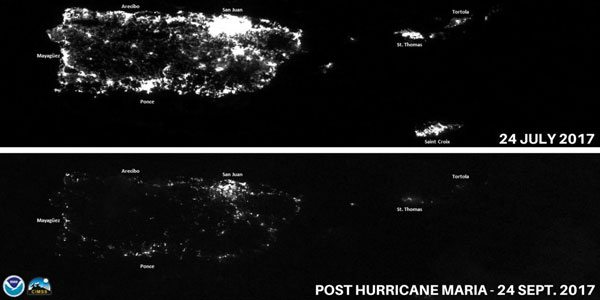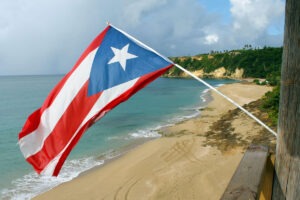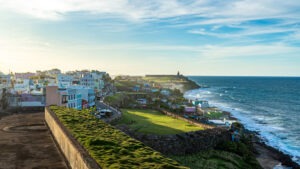
December 18, 2017; New York Times and New England Cable News
Unfortunately, manmade disasters often follow natural ones. One of the latest examples can be found in the US government’s response to Puerto Rico after Hurricane Maria did catastrophic damage to the island in September. A new report by the nonprofit Refugees International (RI) has found that two months after the hurricane hit, the emergency response by both US federal and local officials in Puerto Rico has left many of the island’s 3.4 million residents still living in unsafe conditions and unable to access help, even when the help is nominally there.
“There was a failure of leadership and a failure to appreciate the magnitude of the situation and the need for extraordinary action by US officials,” Eric Schwartz, president of Refugees International, said in an interview with the Associated Press. “These people are our fellow Americans. The response of the federal authorities should have been and should be much stronger than it was and much stronger than it is.”
In the confusion, even the number of people who died as a result of the hurricane is under serious question; many say the official number of 64 is far too low and doesn’t reflect the fact that a thousand more people than usual died during the 42 days following the storm. The New York Times reported on Monday that the method of counting the dead is under official review.
Much of that difference comes from deaths that might not have been caused by the hurricane itself but came in its aftermath, when people were unable to get medical care because hospitals weren’t functioning or when life-saving equipment such as oxygen machines didn’t work because of electricity blackouts. For example, the New York Times reported there was a 50 percent increase in recorded deaths from sepsis, a severe infection that’s often an indicator of delayed medical care or poor living conditions, in the weeks following the hurricane.
Sign up for our free newsletters
Subscribe to NPQ's newsletters to have our top stories delivered directly to your inbox.
By signing up, you agree to our privacy policy and terms of use, and to receive messages from NPQ and our partners.
“Everyone is here to help, but there is an epic leadership void,” an aid worker was quoted as saying in the RI report, “Keeping Faith With Our Fellow Americans: Meeting the Urgent Needs of Hurricane Maria Survivors in Puerto Rico.”
One thing that has dogged the US federal government response to Puerto Rico is the apparent confusion about responsibility. Is Puerto Rico part of the US? Certainly, but it’s not really clear that that federal officials (or most Americans) knew that in the early days after Hurricane Maria. This left the island in a no-man’s land—and, ironically, unable to access the generally superior, quicker, and better coordinated responses the US gives to foreign countries hit by natural disasters. Instead, the US government followed FEMA’s response blueprint—only much delayed and with less success than in similarly hard-hit places like Texas following Hurricane Harvey and Florida following Hurricane Irma. FEMA’s reliance on coordinating with local authorities was not effective in this case, the report found. Puerto Rican resources—if Puerto Rico was a US state, it would be the poorest in the country—were quickly overwhelmed by the storm, and the late federal government response exacerbated the situation.
The report says the chaos of the early days essentially continues, with lack of coordination between local and federal authorities holding sway. Tarps are available, but few can actually seem to get them, leaving people living in homes with leaky roofs or none at all. FEMA disaster aid is available to homeowners, but the forms are confusing. One applicant reported his cell phone going dead because he was on hold for 20 minutes with FEMA—and he had no way to recharge it due to the lack of electricity.
NPQ has reported extensively on the effect of Hurricane Maria and its aftermath on Puerto Rico. The criticism of the response started in the earliest days following landfall. NPQ’s Cyndi Suarez is currently in Puerto Rico and will be reporting in early January on the role of the nonprofit sector there and how activists are seeking to fill the yawning gaps resulting from the public sector’s inadequate response.—Nancy Young













